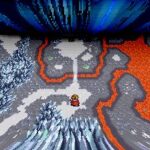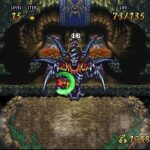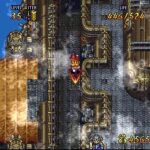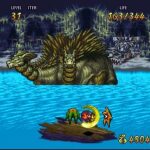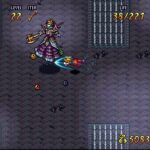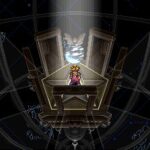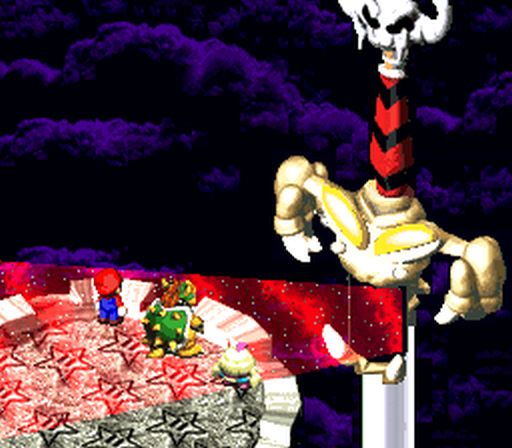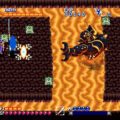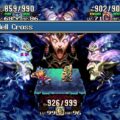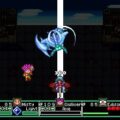Developer: Quintet Publisher: Nintendo Release: 12/19/96 Genre: Action RPG
One of the great injustices of the 16-bit era is that Terranigma did not release in the US. It is understandable; as a late 1995 release any localization would take a year or more. Indeed, Nintendo of Europe’s localization did not materialize until almost 1997! The fact that an English version was available yet denied a full worldwide release still stings. It was painful seeing all of the import coverage it received throughout 1995 only to be denied at the 11th hour. But enough about that. As the final title in Quintet’s loose creation trilogy takes all of the ideas that they fostered in their previous titles to their zenith to create a truly unique game. Terranigma is a truly fantastic game with a great story, stellar production values and perfect pacing. It rarely gets better than this.
In the land of Crysta the villagers are instructed to never leave the boundaries of the village and to never open a mysterious door in the Elder’s house. A mischievous youth named Ark opens this door on a dare and unintentionally turns nearly everyone in town to stone. The elder tells Ark to reverse the damage he has caused he must visit five towers in the outside world to restore the continents to the world above. But this small quest becomes something much bigger, one that will span decades and result in the civilization as we know it. But how did the world die? And why is Ark the one chosen to restore it? These questions and many more provide the drive of Ark’s quest.
Terranigma is the culmination of all of Quintet’s work on the SNES. The plot is an amalgamation of the world building of Soul Blazer and the exploration of Illusion of Gaia. Later you even get to build up the civilization level of the world like Act Raiser. The primary cast of characters is small so you lose the excellent character development from Illusion of Gaia. In my opinion the story is not as strong as that game; the cast truly helped IoG shine and was paced well. Nevertheless the story still has plenty of poignant moments and asks some profound questions. The plot in Terranigma starts strong but lags a little in the middle but picks up for a strong finish toward the end. The way the small tasks you accomplish throughout the game have a direct impact on the world is brilliant.
The gameplay in Terranigma is a significant step up over its predecessors. Combat has seen a significant overhaul as Ark has a plethora of attacks to keep gameplay fresh. Aside from the standard slash you can perform a spinning slash, a multi-hit rush attack, and the middle slicer. The middle slicer in particular is broken and nearly breaks the game’s difficulty if you spam it. You can also run and perform a sliding attack which is also neat. Ark can block attacks but this is rarely necessary. Ark equips a variety of lances and spears, some that have elemental or other special properties that are effective against certain enemies. Some enemies are only weak against certain attacks but for the most part spamming one or two specials will get you pretty far.
The magic system is a nice idea in theory but too cumbersome and rarely worth it. Rather than learning spells as you go instead magic is bought and stored in magirocks. You find magirocks throughout the world or as rewards from activities. Unfortunately once you use a spell you have to buy it once again. Outside of healing and warping out of dungeons your normal attacks are so powerful it is not worth bothering with.
The main quest is linear but offers more freedom than Illusion of Gaia. As you progress you reawaken the world in stages. First plants, then animals, and finally humanity. Once mankind is reborn the game opens up. Many of the game’s towns are basic and you can influence their growth. The numerous side quests involve helping inspire numerous inventors around the world and spreading their creations worldwide. These range from food items like tinned sardines, medicine, the camera and even electricity. As you spread these items around the world the growth index of each town rises and they grow and change. A humble village will eventually turn into a modern day metropolis with televisions and phones in every house. This is the ultimate realization of Quintet’s work and you choose how much to engage in it. Of course the rewards make it worthwhile but it is satisfying in general.
The pacing of the story is excellent but your level growth is generally smooth as well. Terranigma uses a traditional experience system rather than the odd random stat growth of its predecessors. Each level brings tangible stat growth that is almost immediately noticeable. A seemingly invincible enemy becomes a cake walk with one or two levels of growth. Generally you will never have to stop and grind with one exception. One boss toward the middle of the game (Bloody Mary) is vastly overpowered for the level range most players will reach her. This is the one area that most will have to grind or spam elec rings and hopes for the best. Outside of this one exception the game is very easy overall.
In Closing
Terranigma is one of the finest action RPGs of all time and greatest games of the 16-bit era. Quintet truly created a masterpiece that excels in every category, pacing, presentation, gameplay and especially music. If there is any one game that deserves a re-release this is it. I do not care if it is a simple rom dump, a full remake or what have you; just make the game available to a wider audience. More need to experience this great game.


